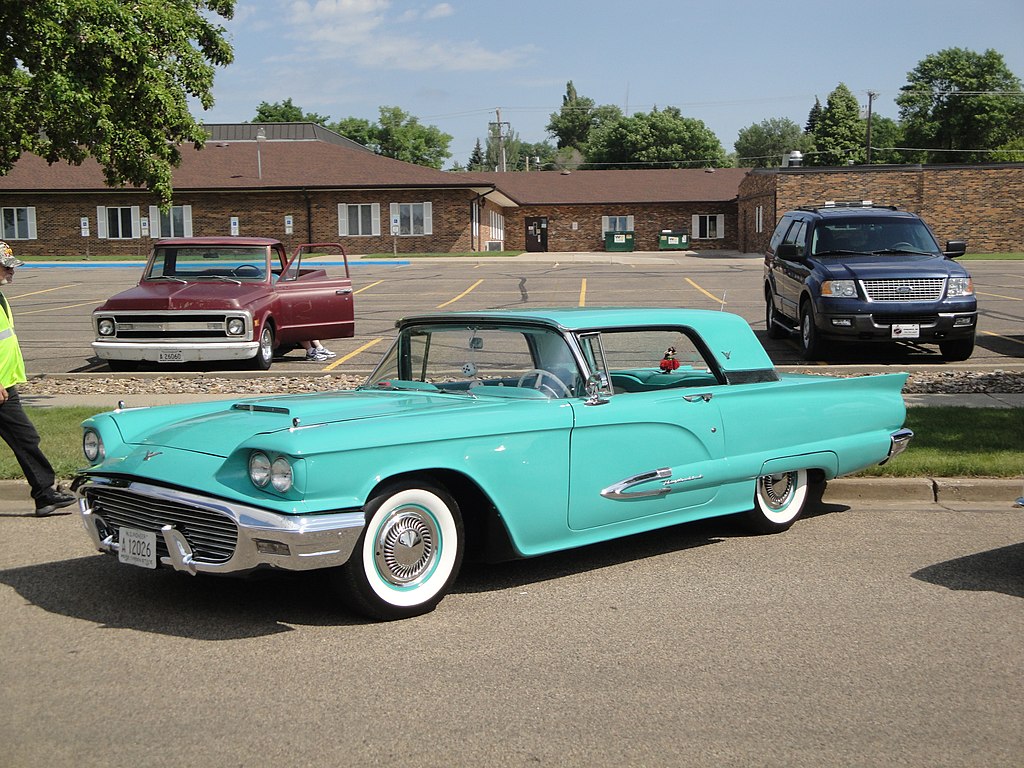
On the heels of the Chevrolet Corvette debut in January 1953, Ford unveiled the concept for the Thunderbird to the public just one month later. Believing Chevy would begin Corvette begin production in the near future, Ford kicked development of the Thunderbird into high gear. A full scale, painted clay model that closely resembled the production T-Bird debuted by May. Final approval would come the following September after minor tweaks. Engineers scrambled to build a brand new car in near record time. Just one year after introducing the idea of the car, the Ford Thunderbird wowed the public at the Detroit Auto Show on February 20, 1954. Production would begin the following September and on this day in 1954 the Thunderbird went on sale.

Top: 1955 Ford Thunderbird debut at the 1954 Detroit Auto Show. (Ford).
Billed as a personal luxury car, the Thunderbird was a competitor of the Corvette, despite Ford inventing a new class in which to market the car. In any case, drivers gobbled them up. More than 16,000 left dealer lots in its introductory year, compared to only 700 Corvettes. Sales remained strong for the T-Bird in ’56 and ’57, but competition from the Vette grew thanks to Chevy’s new small block V8.
Though more than 21,000 Thunderbirds sold in 1957, Ford executives believed its two seat configuration was limiting its potential. They were right. After redesigning the Thunderbird as a four-seater, more than 200,000 sold between the beginning of 1958 and the end of 1960.

The Thunderbird would ultimately grown and shrink numerous times as it evolved over ten generations before being discontinued in 1997. A retro Thunderbird, featuring design queues of the 1955-57 models, came to market in 2002. Sales were initially promising, but proved to be a fad. Production of the 11th generation Thunderbird ended on July 1, 2005.




















